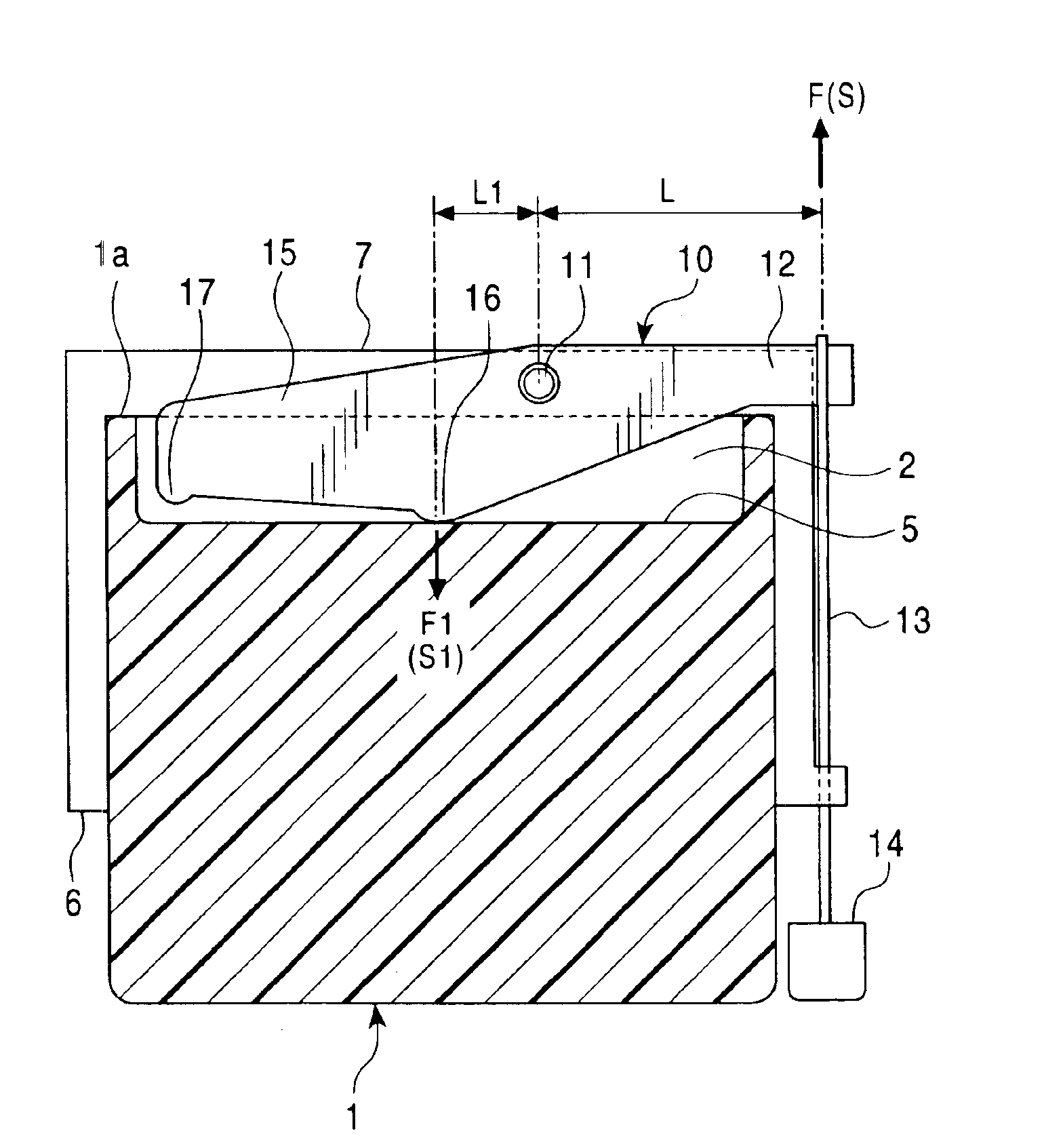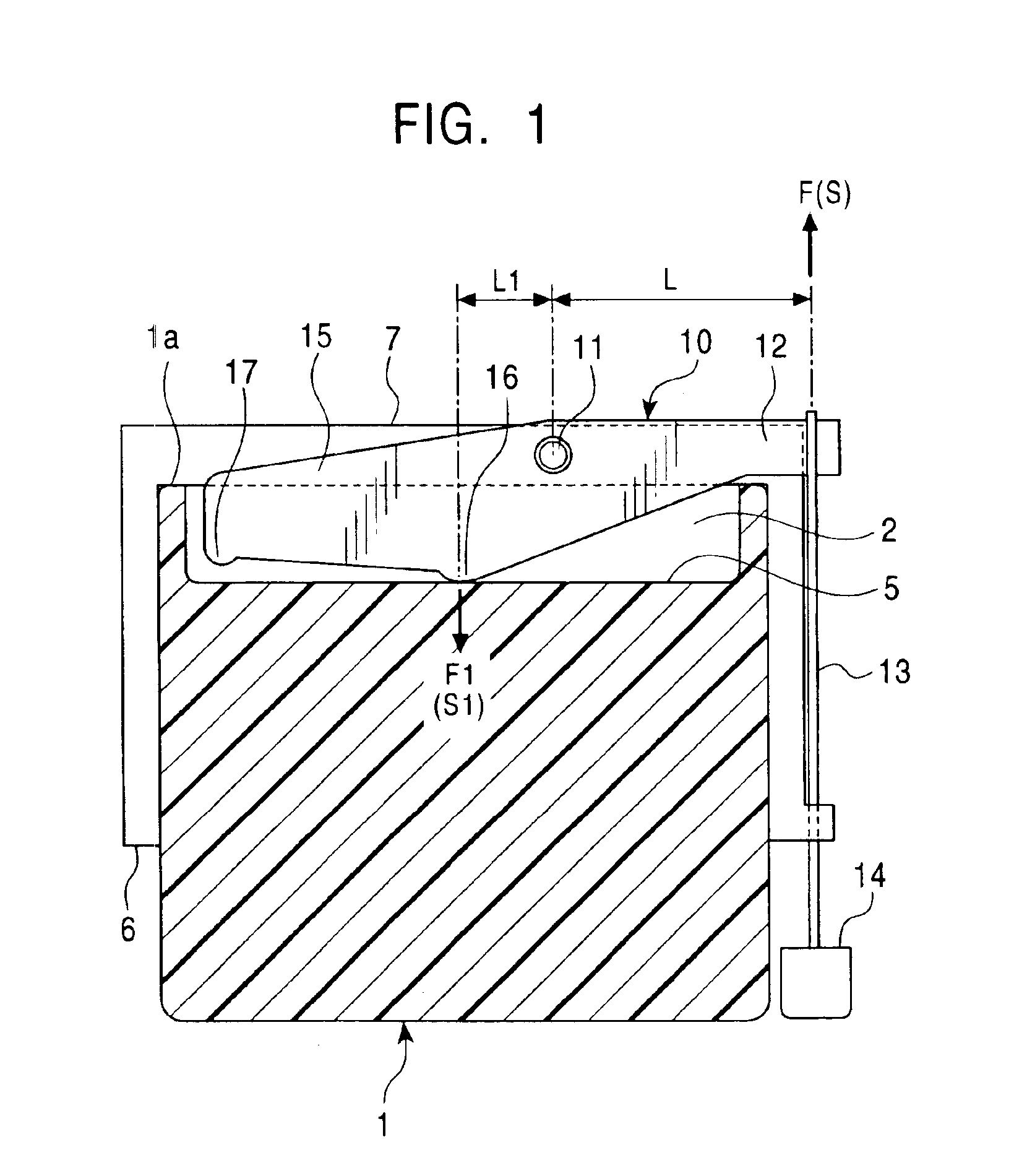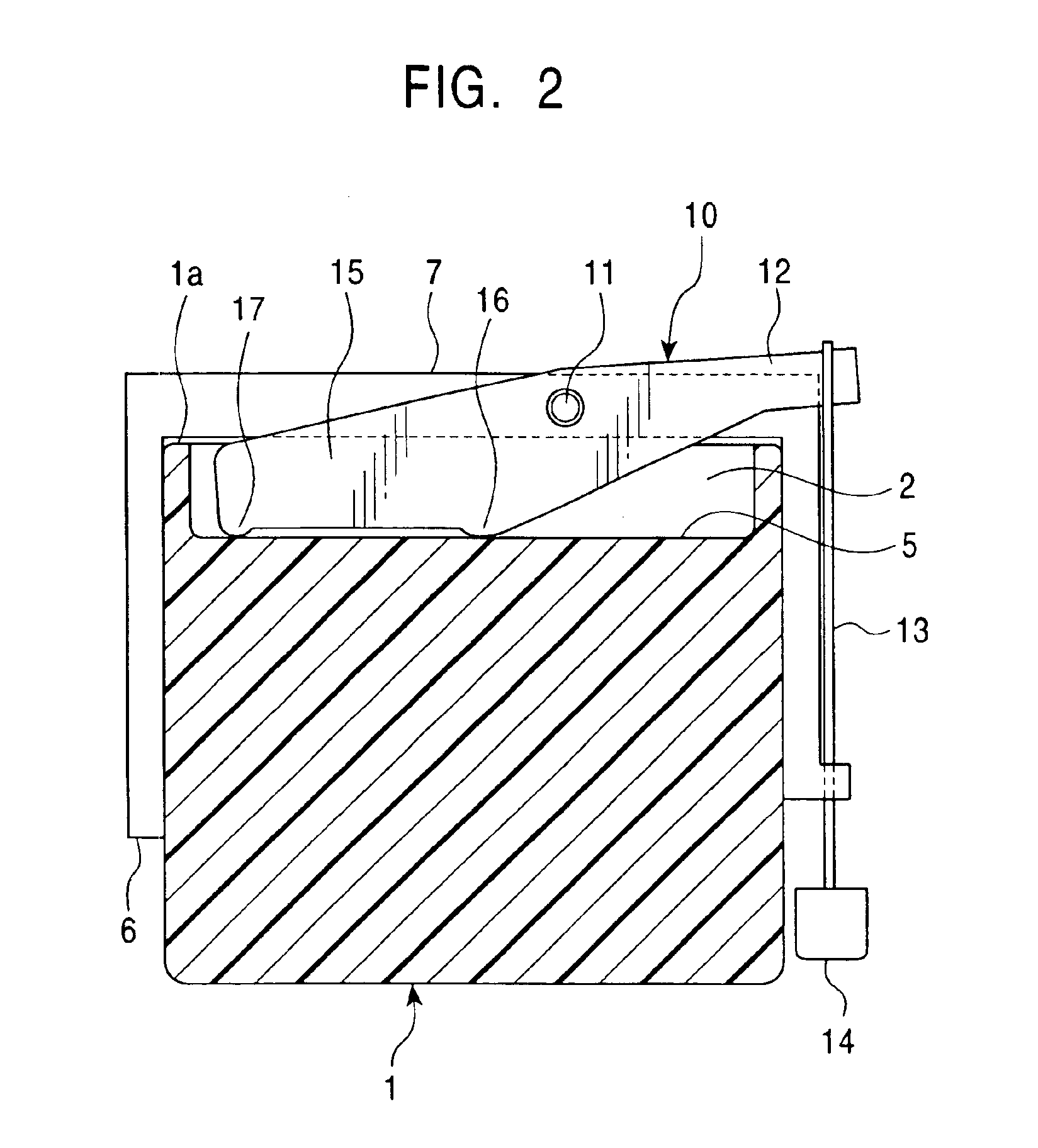Card connector including ejecting lever for ejecting card
- Summary
- Abstract
- Description
- Claims
- Application Information
AI Technical Summary
Benefits of technology
Problems solved by technology
Method used
Image
Examples
first embodiment
[0043]FIGS. 1 to 3 are illustrations of the present invention, including sectional views of a card. FIG. 1 is a plan view showing the starting stage of card ejection. FIG. 2 is a plan view showing the middle stage of card ejection. FIG. 3 is a plan view showing the ending stage of card ejection.
[0044]FIGS. 4A and 4B show the relation among the card, an ejecting lever, and a header included in the first embodiment of the present invention. FIG. 4A is a cross-sectional view showing the relevant part before the card is placed. FIG. 4B is a cross-sectional view showing the relevant part when the card is placed.
[The Card Used in the First Embodiment]
[0045]The card 1 used in the first embodiment of the present invention is a small size memory card having an information storage function. As shown in FIG. 1, the card 1 has a recess 2 at the front end 1a located in the back of the connector when the card 1 is in place. As shown in FIG. 4A, the recess 2 has an opening 2a, and the upper part o...
second embodiment
[0069]FIGS. 6 to 8 are illustrations of the present invention, including sectional views of a card. FIG. 6 is a plan view showing the starting stage of card ejection. FIG. 7 is a plan view showing the middle stage of card ejection. FIG. 8 is a plan view showing the ending stage of card ejection.
[The Structure of the Relevant Part of the Second Embodiment]
[0070]The second embodiment has different distance varying means from the first embodiment.
[0071]That is to say, in the second embodiment, as shown in FIG. 6, the distance varying means include a curved portion 18 disposed at the second end 15 of the ejecting lever 10, the curved portion 18 pushing the card 1. The curved portion 18 includes a contact-starting segment 19 and a contact-ending segment 20. The line connecting the contact-starting segment 19 and the contact-ending segment 20 is convex toward the front end 1a of the card 1.
[0072]The other structure is the same as in the first embodiment.
[Ejection of the Card]
[0073]Also in...
PUM
 Login to View More
Login to View More Abstract
Description
Claims
Application Information
 Login to View More
Login to View More - R&D
- Intellectual Property
- Life Sciences
- Materials
- Tech Scout
- Unparalleled Data Quality
- Higher Quality Content
- 60% Fewer Hallucinations
Browse by: Latest US Patents, China's latest patents, Technical Efficacy Thesaurus, Application Domain, Technology Topic, Popular Technical Reports.
© 2025 PatSnap. All rights reserved.Legal|Privacy policy|Modern Slavery Act Transparency Statement|Sitemap|About US| Contact US: help@patsnap.com



